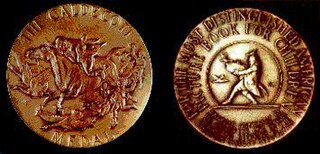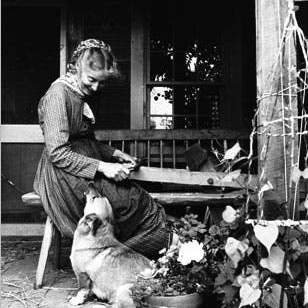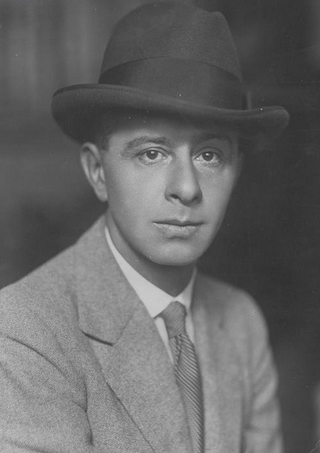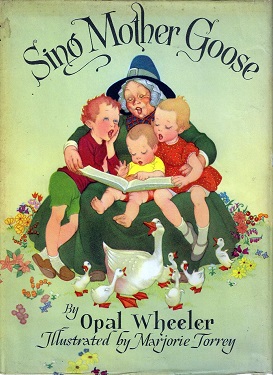
The John Newbery Medal, frequently shortened to the Newbery, is a literary award given by the Association for Library Service to Children (ALSC), a division of the American Library Association (ALA), to the author of "the most distinguished contributions to American literature for children". The Newbery and the Caldecott Medal are considered the two most prestigious awards for children's literature in the United States. Books selected are widely carried by bookstores and libraries, the authors are interviewed on television, and master's theses and doctoral dissertations are written on them. Named for John Newbery, an 18th-century English publisher of juvenile books, the winner of the Newbery is selected at the ALA's Midwinter Conference by a fifteen-person committee. The Newbery was proposed by Frederic G. Melcher in 1921, making it the first children's book award in the world. The physical bronze medal was designed by Rene Paul Chambellan and is given to the winning author at the next ALA annual conference. Since its founding there have been several changes to the composition of the selection committee, while the physical medal remains the same.

The Randolph Caldecott Medal, frequently shortened to just the Caldecott, annually recognizes the preceding year's "most distinguished American picture book for children". It is awarded to the illustrator by the Association for Library Service to Children (ALSC), a division of the American Library Association (ALA). The Caldecott and Newbery Medals are considered the most prestigious American children's book awards. Besides the Caldecott Medal, the committee awards a variable number of citations to runners-up they deem worthy, called the Caldecott Honor or Caldecott Honor Books.
Mordicai Gerstein was an American artist, writer, and film director, best known for illustrating and writing children's books. He illustrated the comic mystery fiction series Something Queer is Going On.

Tasha Tudor was an American illustrator and writer of children's books.
Peter Spier was a Dutch-American illustrator and writer who created more than thirty children's books.

Ed Tse-chun Young was a Chinese-born American illustrator and writer of children's picture books and tai chi instructor. He has received many awards and recognitions, including the Caldecott Medal and Lifetime Achievement awards for his contributions as a children's illustrator.

Feodor Stepanovich Rojankovsky, also known as Rojan, was a Russian émigré illustrator. He is well known both for children's book illustration and for erotic art. He won the 1956 Caldecott Medal for U.S. picture book illustration from the American Library Association, recognizing Frog Went A-Courtin' by John Langstaff.

Marguerite de Angeli was an American writer and illustrator of children's books including the 1950 Newbery Award winning book The Door in the Wall. She wrote and illustrated twenty-eight of her own books, and illustrated more than three dozen books and numerous magazine stories and articles for other authors.

Chris Raschka is an American illustrator, writer, and violist. He contributed to children's literature as a children's illustrator.
Barbara Cooney was an American writer and illustrator of 110 children's books, published for over sixty years. She received two Caldecott Medals for her work on Chanticleer and the Fox (1958) and Ox-Cart Man (1979), and a National Book Award for Miss Rumphius (1982). Her books have been translated into ten languages.
Uri Shulevitz is an American writer and illustrator of children's books. He won the 1969 Caldecott Medal for U.S. picture book illustration, recognizing The Fool of the World and the Flying Ship, an Eastern European fairy tale retold by Arthur Ransome in 1916.
Marc Simont was a Paris-born American artist, political cartoonist, and illustrator of more than a hundred children's books. Inspired by his father, Spanish painter Joseph Simont, he began drawing at an early age. Simont settled in New York City in 1935 after encouragement from his father, attended the National Academy of Design with Robert McCloskey, and served three years in the military.

Roger Antoine Duvoisin was a Swiss-born American writer and illustrator best known for children's picture books. He won the 1948 Caldecott Medal for picture books and in 1968 he was a highly commended runner-up for the biennial, international Hans Christian Andersen Award for children's illustrators.
Nancy Ekholm Burkert is an American artist and illustrator. Her most celebrated work is the picture book Snow White and the Seven Dwarfs (1972), which was a New York Times Notable Book and a Caldecott Honor Book.
Molly Garrett Bang is an American illustrator. For her illustration of children's books she has been a runner-up for the American Caldecott Medal three times and for the British Greenaway Medal once. Announced June 2015, her 1996 picture book Goose is the 2016 Phoenix Picture Book Award winner – that is, named by the Children's Literature Association the best English-language children's picture book that did not win a major award when it was published twenty years earlier.

Lauren Ford was an American painter and author. Ford's works were held at the Corcoran Gallery of Art and Museum of Modern Art. Outside of painting, her book The Ageless Story was named a Caldecott Medal Honor in 1940.

A Big Mooncake for Little Star is a 2018 picture book written and illustrated by Grace Lin. The story is about Little Star gradually eating the mooncake that her mother has baked. The book was a departure for Lin both thematically and in her use of illustrative style. The book was well reviewed and was awarded a Caldecott Honor in 2019. The illustrations feature heavy use of black and rely on both the pictures and words to convey the story and its themes.

Sing Mother Goose is a 1945 picture book with music by Opal Wheeler and illustrated by Marjorie Torrey. The book contains a collection of Mother Goose Nursery rhymes set to music. The book was a recipient of a 1946 Caldecott Honor for its illustrations.

Book of Nursery and Mother Goose Rhymes is a 1954 picture book written and illustrated by Marguerite de Angeli. The book is a collection of Mother Goose rhymes accompanied by illustrations. The book was a recipient of a 1955 Caldecott Honor for its illustrations.

1 is One is a 1956 picture book written and illustrated by Tasha Tudor. The book is a counting book going up to number 20. The book was a recipient of a 1957 Caldecott Honor for its illustrations.













